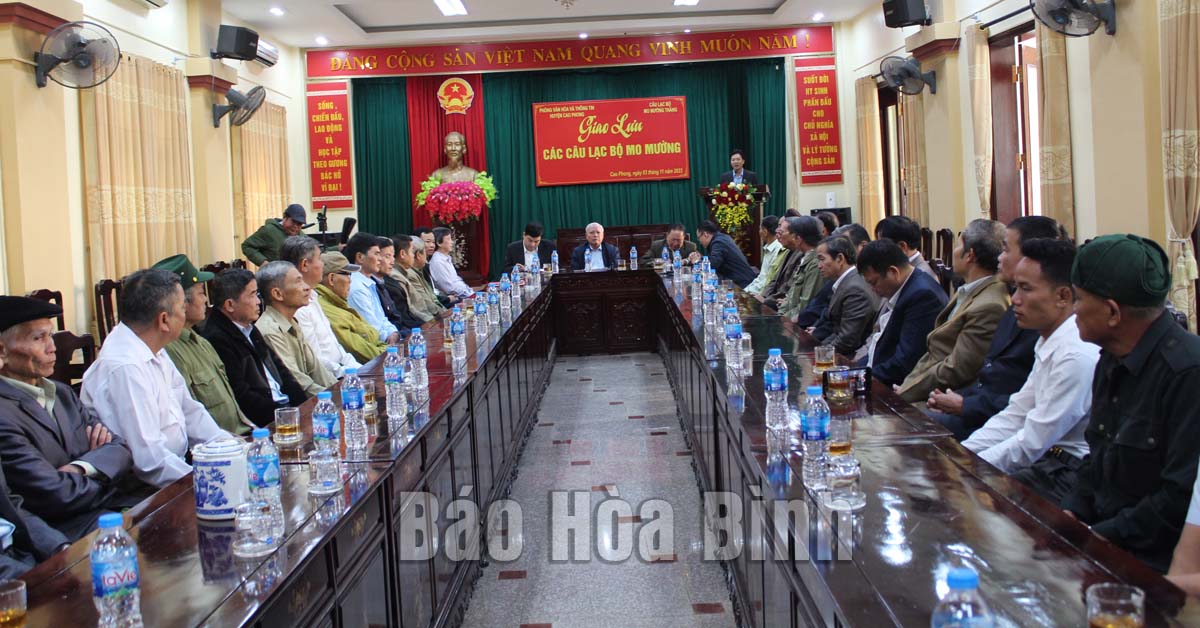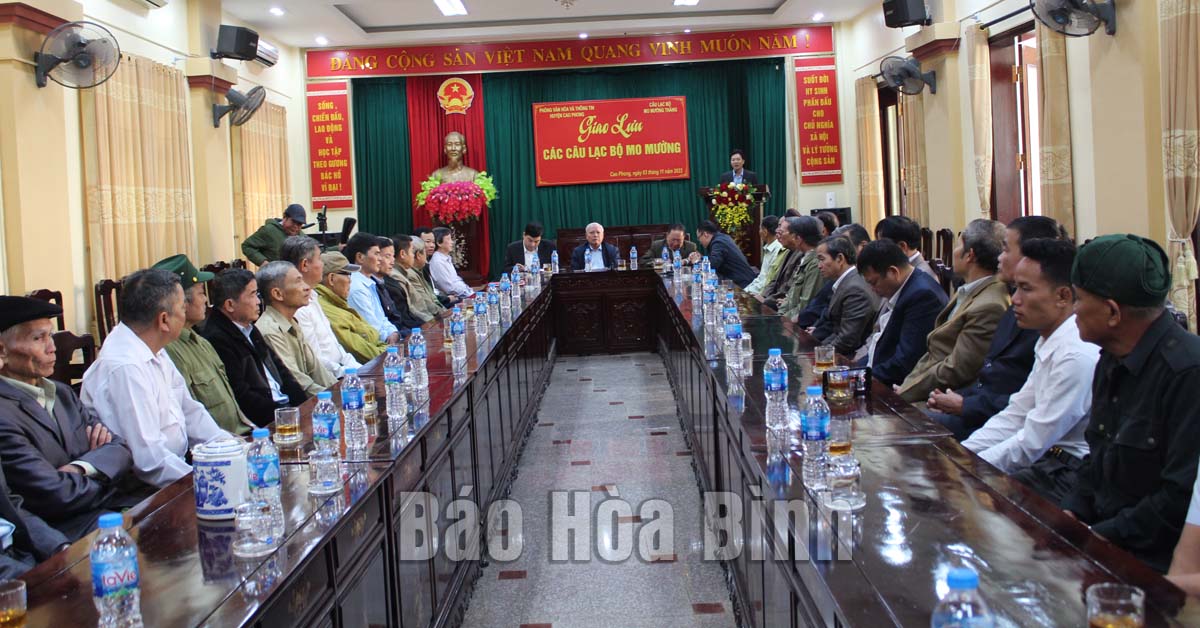
(HBO) - In November 3rd, in Cao Phong district, Cao Phong’s Department of Culture and Information Department organized the exchange of Mo Muong Thang club of Cao Phong district with Mo Muong club of Tan Lac district and Mo Muong club of Lac Son district. There were the representatives of the leaders from the Department of Culture, Sports and Tourism, People's Committee of Cao Phong district, the representatives of the departments, branches, socio-political organizations of Cao Phong district, and many Mo Muong artisans and the club members attending the meeting.

The delegates are attending the meeting.
In Cao Phong district, Mo Muong Thang Club was established
under Decision No. 2312/QD-UBND, dated in August 13, 2021 of the District’s
People's Committee. Since then, the club has been trying to strengthen the
organization, actively implementing the activities, gradually becoming a common
roof gathering the shamen and the people who are really passionate about Mo
Muong on the land of Cao Phong – Muong Thang. Currently, there are 35 members
in the club, all of whom are active shamen, and the 8 most typical shamen have
been selected to prepare a dossier to request for the title of "Excellent
Artisan”.
like Mo Muong Thang Club, Mo Muong Club in Tan Lac and Lac
Son districts are actively working, demonstrating the core role in the process
of implementing the Project "Preserving and promoting the values of cultural
heritages of the ethnic groups in Hoa Binh province in the period of 2022 –
2025” in the locality. During the exchange program, the delegates spent a lot
of time discussing, sharing experiences, and proposing solutions to improve the
operational efficiency of the clubs in the coming time, which actively
contributes to preserving and developing Mo Muong cultural heritage in the
province.
With an increasingly vibrant and widespread emulation movement aimed at building cultured residential areas and cultured families, Yen Thuy District has been making steady progress toward improving both the material and spiritual well-being of its people, while fostering a civilized, prosperous, beautiful, and progressive community.
Once lacking recreational spaces and community facilities, Residential Group 2 in Quynh Lam Ward (Hoa Binh City) has recently received attention for the construction of a new, spacious, and fully equipped cultural house. The project followed the model of state support combined with public contributions in both labor and funding.
The "All people unite to build cultural life" movement, which has been effectively integrated with Kim Boi district’s socio-economic development goals, is fostering a lively spirit of emulation across local residential areas, hamlets, villages, public agencies, and enterprises. In addition, through the initiative, traditional cultural values are being preserved and promoted, while community solidarity and mutual support in poverty reduction and economic development are being strengthened.
A working delegation of the Hoa Binh provincial People’s Committee led by its Permanent Vice Chairman Nguyen Van Toan on June 11 inspected the progress of a project to build the Mo Muong Cultural Heritage Conservation Space linked to tourism services in Hop Phong commune, Cao Phong district.
Born and growing in the heroic land of Muong Dong, Dinh Thi Kieu Dung, a resident in Bo town of Kim Boi district, in her childhood was nurtured by the sweet lullabies of her grandmother and mother. These melodies deeply imprinted on her soul, becoming an inseparable part of her love for her ethnic group's culture. For over 20 years, this love for her hometown has driven Dung to research, collect, and pass down the cultural values of the Muong people to future generations.
In the final days of May, the Ethnic Art Troupe of Hoa Binh Province organized performances to serve the people in remote, mountainous, and particularly disadvantaged areas within the province. These were not just ordinary artistic shows, but they were the meaningful journeys aimed at spreading cultural values, enhancing the spiritual life of the people and contributing to the preservation of ethnic minority cultural identities.



